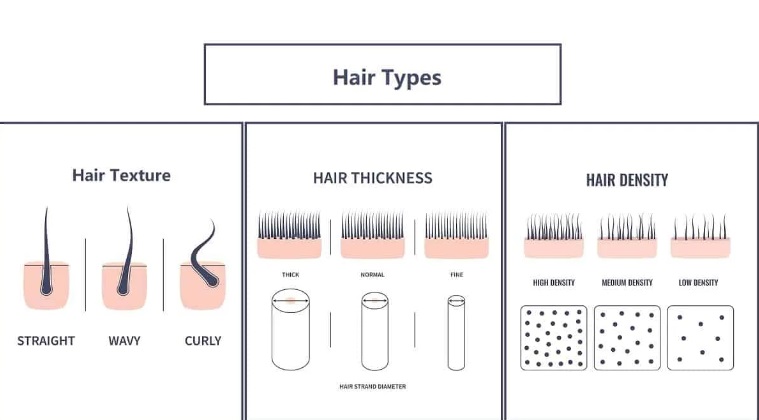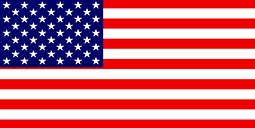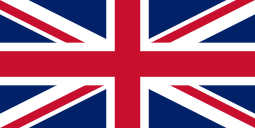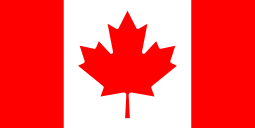Understanding Hair Textures: From Thick To Fine Hair
Understanding Hair Textures: From Thick To Fine Hair
Ever wondered why your curls have a mind of their own, or why your friend's straight hair is playing by different rules? Let's unravel the mystery of hair texture – no complicated jargon, just straight-up truths.
Think of your hair as a unique piece of art, with density, pattern, and thickness as its secret ingredients. It's not just about hair; it's about your individual hair story, a tale told by these distinct textures.
No formalities here, just a straightforward chat about what makes your mane, well, yours. So, grab a seat as we navigate the world of hair textures, where every strand has its own fascinating narrative. Ready to embark on this texture adventure? Let's roll!

Hair Thickness: Thick, Medium, and Fine
1. Thick Hair: Embracing the Volume
Ever run your fingers through a friend's thick mane and wondered what that feels like? Thick hair is the real VIP of volume, boasting strands that are densely packed. Think of it like a natural cushion of fabulousness.
Characteristics of Thick Hair:
- Abundant volume and body.
- Sturdy and less prone to breakage.
- Often has a luscious, healthy appearance.
- Three distinct layers: cortex, cuticle, and medulla, providing a full and robust texture.
- Wide diameter, allowing for straight or curly individual hairs.
Challenges and Benefits of Thick Hair:
Challenges:
- Styling can be time-consuming.
- Might get heavy and hot, especially in warmer weather.
- Moisture-prone, leading to potential dryness, especially at the ends.
Benefits:
- Natural volume without trying too hard.
- Offers a protective shield against environmental factors.
- Less susceptible to damage due to its robust nature.
- Resilient to heat, styling, and chemical treatments.
- Takes longer to dry, but prone to dryness and frizz, especially in humid conditions.
Caring for thick-textured hair involves choosing moisturizing products and those designed to tame frizz. It's a delicate balance between embracing the volume and keeping those strands hydrated and happy.
2. Medium Hair: Striking the Perfect Balance
Medium hair sits right in the sweet spot between thick and fine. It's that Goldilocks zone, not too thick and not too fine – just perfect. You know, the kind that looks effortlessly chic without stealing the show.
Characteristics that Define Medium Hair:
- Moderate volume and thickness, offering versatility in styling.
- Strikes a balance between robustness and manageability.
- Easier to style and maintain compared to thick hair.
- Often more adaptable to various climates and styling techniques.
- Most common hair texture for many individuals.
- Less prone to breakage but more susceptible to dryness.
- Excellent holding capacity for hairstyles.
- Offers thicker volume, effectively covering the scalp.
Medium hair doesn't just stop at being versatile; it's also your reliable partner in crime for stylish looks and a fuller appearance. With its adaptable nature, medium hair lets you have your cake and eat it too – styling ease with a touch of sophistication.
3. Fine Hair:
Fine hair, the delicate whisper in the symphony of hair textures, has its own charm. It's not about quantity; it's about quality. Think of it like the soft petals of a flower – subtle, but oh-so-beautiful.
Unique Characteristics of Fine Hair:
- Delicate and thin strands, give a lightweight feel.
- Tends to have a smoother texture, often with a natural shine.
- Prone to oiliness due to its lightweight structure.
- Typically has two layers: cortex and cuticle, with the medulla layer often absent.
- Typically more soft and fragile, composed of only the cortex and cuticle layers.
- More numerous hair pieces than thick strands, creating deceptive volume.
Additional Characteristics:
- Styling challenges, with difficulty holding styles that fall flat against the head.
- Prone to oiliness, resulting in a silkier and sleek appearance.
- Vulnerable to breakage; the delicacy of fine hair requires gentle care.
- Lighter products are essential to prevent weighing down the strands.
Fine hair might be delicate, but it's a canvas for a different kind of beauty. Embracing its subtlety and choosing the right products will unlock its true potential, creating a soft and elegant statement.
Hair Patterns: Straight, Wavy, Curly, and Coily

1. Straight Hair (type 1 hair)
Straight hair, often classified as Type 1 in the hair-typing system, is the epitome of simplicity in the curl kingdom. Type 1 hair flows gracefully in a straight line, without any noticeable curls or waves. Picture a glossy waterfall of strands that reflect light like a polished mirror. It's that no-nonsense, sleek sophistication that never goes out of style.
Maintenance Tips for Straight Hair:
- Gentle Detangling: Straight hair can be prone to tangling, so use a wide-toothed comb to detangle gently, starting from the tips and working your way up.
- Oil Balancing: Keep the natural oils evenly distributed by brushing regularly, starting from the roots to distribute oils down the length of the hair.
- Avoid Overwashing: Straight hair doesn't require frequent washing. Overwashing can strip away natural oils, leading to dryness. Aim for a schedule that suits your hair's needs.
- Protect from Heat: If you love styling tools, use a heat protectant to shield your straight strands from potential damage. Straight hair is susceptible to heat, so a little protection goes a long way.
Straight hair, or Type 1 hair, may seem low-maintenance, but it has its own set of rules. Treat it right, and it will reward you with that timeless, effortlessly chic vibe.
2. Wavy Hair (2a,2b,2c)
Wavy hair, the perfect marriage between straight and curly, brings a touch of spontaneity to the curl spectrum. Categorized as 2a, 2b, and 2c in the hair-typing system, wavy hair gracefully dances in waves that add a playful, carefree vibe. It's that effortlessly tousled look that captures the essence of relaxed chic.
- 2a Wavy Hair: Gentle waves that are closer to straight hair, creating a subtle, beachy look.
- 2b Wavy Hair: Wavier with a more defined S-shape pattern, striking a balance between straight and curly.
- 2c Wavy Hair: Stronger, more defined waves that lean towards the curly end of the spectrum, offering a lively and textured appearance.
Tips for Enhancing and Maintaining Wavy Hair:
- Hydration is Key: Wavy hair tends to be on the drier side. Keep those waves happy by using hydrating shampoos and conditioners that add moisture without weighing them down.
- Scrunch, Don't Rub: Towel-drying can disrupt those beautiful waves. Instead, gently scrunch your hair with a microfiber towel to maintain the natural pattern.
- Curl-Enhancing Products: Embrace the wave with products specifically designed for wavy hair. Curl-enhancing creams and mousses can accentuate those gorgeous waves without the crunch.
- Air-Dry Magic: Let your waves air-dry whenever possible. The natural method allows your waves to form beautifully without the interference of heat.
Wavy hair, categorized into 2a, 2b, and 2c, is all about embracing the unpredictability of those playful curls. With the right care and a touch of laissez-faire attitude, your waves can become your signature style.
3. Curly Hair (3a, 3b, 3c)
Curly hair, the enchanting whirlwind of spirals, falls into the distinct categories of 3a, 3b, and 3c in the hair-typing system. These curls are the showstoppers, ranging from loose curls to tight coils, each with its own mesmerizing dance. Curly hair is all about celebrating the natural bounce and vibrancy that comes with these lively twists and turns.
- 3a Curly Hair: Loose curls with a well-defined S-shape pattern, creating a cascading, voluminous look.
- 3b Curly Hair: Springier curls with a more pronounced spiral, offering a lively and textured appearance.
- 3c Curly Hair: Tighter, corkscrew curls that bring an abundance of volume and a distinct coil pattern.
Care Routine for Curly Hair:
- Hydration is a Must: Curly hair tends to be drier due to its spiral structure. Keep those curls hydrated with a moisturizing shampoo and conditioner.
- Detangling with Care: Use a wide-toothed comb or your fingers to detangle your curls when wet. This prevents breakage and maintains the curl pattern.
- Say Yes to Leave-In Conditioners: Leave-in conditioners work wonders for curly hair, providing that extra dose of moisture and helping to define the curls.
- Pineapple for Bedtime: Preserve those curls overnight by loosely tying your hair in a high ponytail or "pineapple." This prevents flattening and frizz.
- Avoid Heat, Embrace Diffusers: Minimize heat styling to maintain the health of your curls. If you need to dry your hair, use a diffuser attachment in a low-heat setting.
Curly hair is a celebration of natural texture and vibrancy. With a well-crafted care routine, your curls can be the spotlight of your unique beauty.
4. Coily Hair (4a,4b,4c)
Coily hair, the captivating realm of tight spirals and coils, is divided into the distinct categories of 4a, 4b, and 4c in the hair-typing system. These coils form a mesmerizing dance, each pattern expressing a unique, natural grace.
- 4a Coily Hair: Well-defined, small, and springy curls that create a beautiful halo of natural volume.
- 4b Coily Hair: Tighter curls with a zig-zag pattern, showcasing an exquisite texture and density.
- 4c Coily Hair: Dense, closely packed coils that may not form a distinct curl pattern, presenting a stunning, intricate texture.
Coily Hair Care Tips:
- Moisture is Vital: Coily hair thrives on moisture. Opt for hydrating shampoos, conditioners, and deep conditioning treatments to keep those coils happy.
- Gentle Detangling: Use your fingers or a wide-toothed comb to detangle coily hair when wet, starting from the tips and working your way up.
- Protective Styling: Consider protective styles such as braids, twists, or bantu knots to minimize manipulation and protect your delicate coils.
- Regular Deep Conditioning: Coily hair benefits greatly from regular deep conditioning treatments. This helps maintain elasticity and keeps the hair nourished.
- Avoid Harsh Chemicals: Minimize the use of harsh chemicals, relaxers, or heat styling to preserve the natural integrity of coily hair.
Coily hair is a celebration of intricate patterns and natural beauty. With the right care, these coils can become a stunning expression of individuality and strength.
Factors that can alter the hair textures:
Your hair, like you, is a dynamic masterpiece influenced by various factors, both external and internal. Let's delve into the intricate dance of factors that can shape and alter your hair texture.
External Factors:
- Climate: Humidity and temperature play a significant role in how your hair behaves. In humid conditions, hair tends to absorb moisture, leading to frizz. Dry climates, on the other hand, can contribute to increased dryness and brittleness.
- Styling Tools: Frequent use of heat styling tools, such as flat irons and curling wands, can alter the structure of your hair. Excessive heat exposure may lead to weakened cuticles and increased susceptibility to damage.
- Chemical Treatments: Chemical processes like coloring, perming, or relaxing can bring about significant changes to your hair texture. These treatments may alter the protein structure of the hair, affecting its strength and elasticity.
- Hair Products: The type of hair products you use, including shampoos, conditioners, and styling products, can impact your hair texture. Ingredients that strip natural oils or cause product buildup can influence how your hair looks and feels.
Internal Factors:
- Genetics: The blueprint of your hair is written in your genes. Genetic factors determine your hair type, color, and texture. If your parents had wavy or curly hair, chances are you might inherit a similar texture.
- Hormonal Changes: Hormonal fluctuations, such as those during puberty, pregnancy, or menopause, can influence the production of natural oils in the scalp. This, in turn, affects the texture of your hair, making it oilier or drier.
- Overall Health: Your general health and well-being have a direct impact on your hair. A balanced diet, rich in essential nutrients, contributes to healthy hair growth. Conditions like stress, illness, or nutritional deficiencies can lead to changes in hair texture.
- Medications: Certain medications may have side effects that impact hair texture. It's not uncommon for individuals to notice changes in their hair when undergoing specific medical treatments.
Understanding the interplay of these external and internal factors provides valuable guides into your hair's unique journey. Whether it's adapting to a new climate or responding to changes in your health, your hair is a resilient reflection of your overall well-being.
Tips for Maintaining Different Hair Textures
Taking care of your tresses is like cultivating a garden – it requires tailored attention. Whether you're rocking thick waves or fine coils, these tips will help you nurture your hair, ensuring it stays healthy and vibrant.
General Hair Care Tips (Applicable to All Textures):
- Regular Trims: Regular trims prevent split ends and promote overall hair health. Aim for a trim every 6-8 weeks to maintain a fresh, vibrant look.
- Gentle Washing: Use a sulfate-free, moisturizing shampoo and conditioner to prevent excessive drying. Overwashing can strip natural oils, leading to dryness.
- Protection from Heat: Limit heat styling, and when you do, use a heat protectant to shield your hair from potential damage. Embrace air-drying whenever possible.
- Balanced Diet: A well-balanced diet rich in vitamins and minerals contributes to healthy hair growth. Stay hydrated to nourish your hair from the inside out.
Specific Tips for Thick, Medium, and Fine Hair Maintenance:
1. Thick Hair:
-
- Opt for moisturizing products to combat potential dryness.
- Invest in a wide-toothed comb for gentle detangling.
- Consider layers for weight reduction and enhanced manageability.
2. Medium Hair:
-
- Embrace versatile styles due to medium hair's adaptability.
- Use moderate amounts of styling products to maintain balance.
- Regularly switch up your hairstyles for a fresh look.
3. Fine Hair:
-
- Choose lightweight, volumizing products to avoid weighing down the strands.
- Be cautious with heat styling to prevent breakage.
- Consider shorter hairstyles for added volume.
Recommendation Tips for Straight, Wavy, Curly, and Coily Hair:
1. Straight Hair:
-
- Embrace the sleekness with regular smoothing treatments.
- Use a boar bristle brush for a polished finish.
- Experiment with occasional loose curls for added texture.
2. Wavy Hair:
-
- Enhance waves with curl-enhancing products.
- Embrace scrunching to maintain the natural wave pattern.
- Consider loose braids for beautiful waves overnight.
3. Curly Hair:
-
- Prioritize moisture with leave-in conditioners and deep conditioning treatments.
- Use a diffuser attachment to dry the curls gently.
- Explore protective styles like braids and twists.
4. Coily Hair:
-
- Regularly deep condition to maintain moisture levels.
- Embrace protective styling for reduced manipulation.
- Use a satin or silk pillowcase to minimize friction and breakage.
Remember, your hair is as unique as you are. Tailor your care routine to its specific needs, and your locks will thank you with vitality and shine.
Hairstyles for Different Hair Textures
Your hair is your canvas, and the right hairstyle can be your masterpiece. Whether you're rocking thick waves or fine coils, these styling tips and recommendations will help you express your unique beauty.
Styling Tips for Thick, Medium, and Fine Hair:
1. Thick Hair:
- Voluminous Layers: Embrace layers to manage thickness while maintaining volume.
- Braided Styles: Experiment with intricate braids that showcase the thickness of your hair.
- High Ponytails or Buns: Showcase the fullness with elevated styles.
2. Medium Hair:
- Textured Lob: Go for a textured long bob for a chic and easy-to-maintain look.
- Messy Buns: The moderate volume of medium hair creates a perfect messy bun.
- Half-Up, Half-Down: Showcase the versatility with this classic style.
3. Fine Hair:
- Pixie Cut: A shorter cut can add the illusion of thickness and a touch of sass.
- Soft Waves: Create subtle waves to add texture and movement.
- Low Ponytails: Keep it sleek and simple with a low ponytail for a polished look.
Hairstyle Recommendations for Straight, Wavy, Curly, and Coily Hair:
1. Straight Hair:
- Sleek Ponytail: Showcase the straight sophistication with a sleek, high ponytail.
- Straight and Center-Parted: Keep it classic with a simple straight style and a center part.
- Blunt Cut: A straight, blunt cut adds a modern and polished touch.
2. Wavy Hair:
- Beachy Waves: Enhance your natural waves with a beachy, tousled look.
- Boho Braids: Experiment with loose braids for a carefree, bohemian vibe.
- Half-Up Topknot: Combine the best of both worlds with a half-up topknot.
3. Curly Hair:
- Defined Curls: Embrace your curls with a defined, bouncy look.
- Curly Ponytail: Keep it playful and practical with a high curly ponytail.
- Updo with Curls: Elevate your look with a curly updo for a touch of sophistication.
4. Coily Hair:
- Twist-Out Styles: Showcase the beauty of your coils with twist-outs for defined curls.
- Afro Puff: Embrace the natural volume with an afro puff.
- Bantu Knots: Experiment with stylish Bantu knots for a unique and bold look.
Remember, these are just starting points. Feel free to mix and match styles, and most importantly, have fun expressing your individuality through your hair.
Conclusion
In the wonderful tapestry of hair, each texture is a chapter in your personal story. Understanding your hair's unique character is more than a style choice; it's a key to maintaining vibrant, healthy locks.
Why Understanding Matters:
Appreciating your hair's subtleties is about more than just looks. It's about unlocking the secrets to keeping your hair at its best, whether it's straight, wavy, curly, or coily. Each texture is a piece of your journey.
Embrace the Diversity:
Celebrate the natural diversity of your hair. Every texture is a brushstroke, contributing to the portrait of who you are. Let your hair be a canvas for your distinct expression, a beautiful reflection of your individuality.
Discover Ula Hair's Premium Offerings:
At Ula Hair, we know the importance of embracing your unique beauty. Our human hair extensions and wigs are crafted to suit all textures, ensuring everyone finds their perfect match. Step into a world where your hair becomes a statement, tailored just for you.
Join us in celebrating the beauty of diversity, where every texture is a masterpiece. Your hair is your story – let it be told beautifully with Ula Hair.
Related Articles:
Understanding Your Hair Texture: Where Your Beauty Begins
Yaki Straight Hair: The Textured Trend Taking Over Extensions
All You Should Know About 4C Hair
6 Protective Hairstyles Recommended For 4C Hair

 USD
USD EUR
EUR GBP
GBP CAD
CAD












